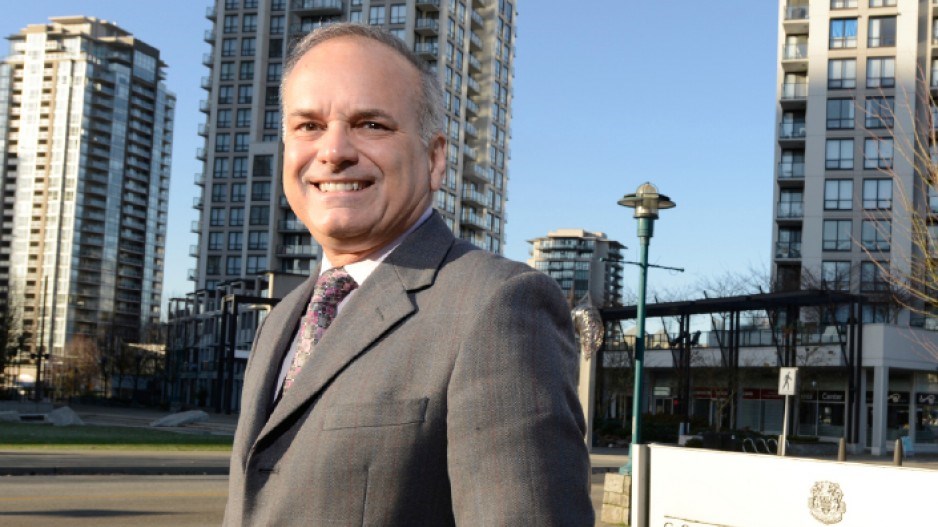Traditionally seen as a Vancouver suburb, Surrey is quickly becoming the Lower Mainland’s geographic and commercial locus. The shift is prompting Surrey’s neighbours, among them Coquitlam and Burnaby, to look carefully at how they continue to develop their commercial landscape.
“The growth in Surrey, no question, has moved the centre of gravity,” said Coquitlam mayor Richard Stewart.
BC Statistics predicts that the province will see nearly 1.4 million more residents by 2036, one million of which will be living in the Lower Mainland. The City of Surrey projects 250,000 of them will settle in Surrey.
For Stewart, creating an effective, efficient transportation infrastructure is critical if his city plans to meet the future transportation demands of those living and working in Coquitlam and Surrey.
“We want jobs and high density residential [development] around high capacity rail transit.”
Anthony Perl, professor of urban studies and political science at Simon Fraser University, believes sound development principles are critical now more than ever because Surrey’s population growth might be greater than has been predicted.
“We could wind up with a much higher population growth [in Surrey] in the next 10 to 20 years than what’s anticipated,” said Perl, referencing his belief that climate change in the next quarter-century may result in a worldwide increase in northwards migration.
On how to meet the anticipated demand for living and working space in both Surrey and its surrounding communities, Perl was unequivocal: “The big question is in the configuration.”
Development that focuses on what he calls a nodal format will be the most cost effective. Perl noted that the sprawl characteristic of development in the ’80s and ’90s, which is common to many U.S. states, is neither cost effective nor sustainable.
“The temptation, especially in communities with ample greenfield sites, is to go big,” said Perl. Like Surrey, Coquitlam and Burnaby, along with Delta, Richmond and Langley, far surpass Vancouver in available space for such growth.
But Perl warned that this sort of development poses infrastructure cost challenges that will be impossible to manage, particularly as population surges.
Burnaby mayor Derek Corrigan sees the practice of selling industrial land to property developers as a dangerous temptation.
“There’s a lot of money to be made, which is a highly motivating factor. But that can come at the cost of preserving the very land needed to support continued business.”
Corrigan said planning around transit systems is key to sustainable development and pointed to neighbourhoods such as Metrotown, Brentwood, Lougheed and Edmunds as examples of successful development.
“Transit has been an absolute key in our city’s development. With the SkyTrain that now goes into Surrey, you haven’t seen the kind of [surrounding] development that you’ve seen in other communities.”
There’s extensive development, he said, “but without the infrastructure or the businesses that will be able to support jobs.”
“[Businesses] have to become more creative, more compact and learn to better utilize the land. As politicians, we have to protect industrial land yet realize that some businesses require expanded scope.”
According to Colliers International’s 2013 2nd quarter report on available commercial space by property size, Burnaby and Coquitlam (Tri-Cities) rank in the top four among Lower Mainland municipalities.
Colliers also predicts that Tri-Cities, Burnaby and Surrey will be able to meet demand for vacancy in 2014, while Vancouver will experience a shortfall.
An industrial lands report from the National Association of Industrial and Office Properties and the Pacific Land Group released in June 2013 supports the direction taken by both mayors.
The report urges municipal policy-makers to intensify land use, predicting that in six to 12 years there will be no more industrial land available for development.•




